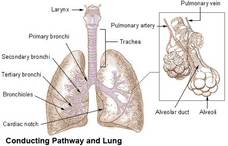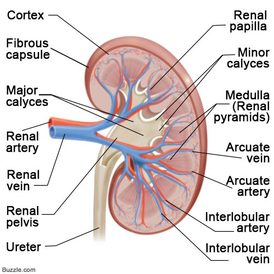Homoeostasis
Homoeostasis is the process that controls all of the internal functions such as the removal of CO2, removal of Urea, the iron content, water content, sugar content and temperature. Homoeostasis is essential for the excretory system as it allows the body to control the flow of water, waste, temperature and many nutrients. Homeostasis is vital for all living organisms as it helps them to maintain healthy living needed for survival. Without the process of homeostasis, we and many other living things would not have the ability to excrete.
The Organs

Kidneys And Bladder:
The kidney's and bladder are the part of the excretory system that helps to filter the toxins and waste products out of the body. These two organs work together to control the water percentage, filtration system, purification and the circulatory system. To excrete the bad waste from the body, the kidney will filter blood through and then let the bad waste come out of the bladder. The form in which it comes out is called urine or urea.
Kidney:
Above is a diagram of a kidney. The kidney is located in the lower left and right outer posterior quadrants. There are many parts to the kidney, and they are each divided into many sections. The three main parts of the kidney consist of the cortex, medulla and renal pelvis. The medulla is made of many renal pyramids, obviously in the shape of a triangle. The cortex is the outer region of the kidney. The renal pelvis is connected to the medulla making the area available for the ureter to flow out.
The kidney is a vital organ and is needed for secretion of waste. An overtime of chronic disease in the kidney's may lead to kidney failure which forces the patient into a hospital so that their blood can be filtered out. People who have this have to spend every second day at hospital for a long period of time so that a machine can do what the kidney's cannot. Failure to do this results in the death of a patient. Of course, a platypus cannot have treatment to their kidney's and therefore will pass away.
The kidney's and bladder are the part of the excretory system that helps to filter the toxins and waste products out of the body. These two organs work together to control the water percentage, filtration system, purification and the circulatory system. To excrete the bad waste from the body, the kidney will filter blood through and then let the bad waste come out of the bladder. The form in which it comes out is called urine or urea.
Kidney:
Above is a diagram of a kidney. The kidney is located in the lower left and right outer posterior quadrants. There are many parts to the kidney, and they are each divided into many sections. The three main parts of the kidney consist of the cortex, medulla and renal pelvis. The medulla is made of many renal pyramids, obviously in the shape of a triangle. The cortex is the outer region of the kidney. The renal pelvis is connected to the medulla making the area available for the ureter to flow out.
The kidney is a vital organ and is needed for secretion of waste. An overtime of chronic disease in the kidney's may lead to kidney failure which forces the patient into a hospital so that their blood can be filtered out. People who have this have to spend every second day at hospital for a long period of time so that a machine can do what the kidney's cannot. Failure to do this results in the death of a patient. Of course, a platypus cannot have treatment to their kidney's and therefore will pass away.
Nephron
A nephron is a specialised cell only found in the kidney. There are about 1 million of these in each kidney. The nephron is known as a structural unit for the kidney because it is the main reason as to why the kidney has the ability to excrete waste and maintain the water levels.
The process in which the blood is purified of waste and also the process when the nutrients are extracted from the blood is dependent on the nephron. For the nephron to function, blood travels through the afferent arteriole into the glomerulus which is like a mass of capillaries where the waste is passed on through to the bowman's capsule. From this, the waste (filtrate) is taken through varies different tubule's such as the Loop of Henle where extra waste is added and some nutrients are reabsorbed into the blood stream. Once the filtrate has passed through the different parts of the nephron, it ends in the collecting duct so that it can be passed down into the bladder in order to be excreted out as urine.
The process in which the blood is purified of waste and also the process when the nutrients are extracted from the blood is dependent on the nephron. For the nephron to function, blood travels through the afferent arteriole into the glomerulus which is like a mass of capillaries where the waste is passed on through to the bowman's capsule. From this, the waste (filtrate) is taken through varies different tubule's such as the Loop of Henle where extra waste is added and some nutrients are reabsorbed into the blood stream. Once the filtrate has passed through the different parts of the nephron, it ends in the collecting duct so that it can be passed down into the bladder in order to be excreted out as urine.






